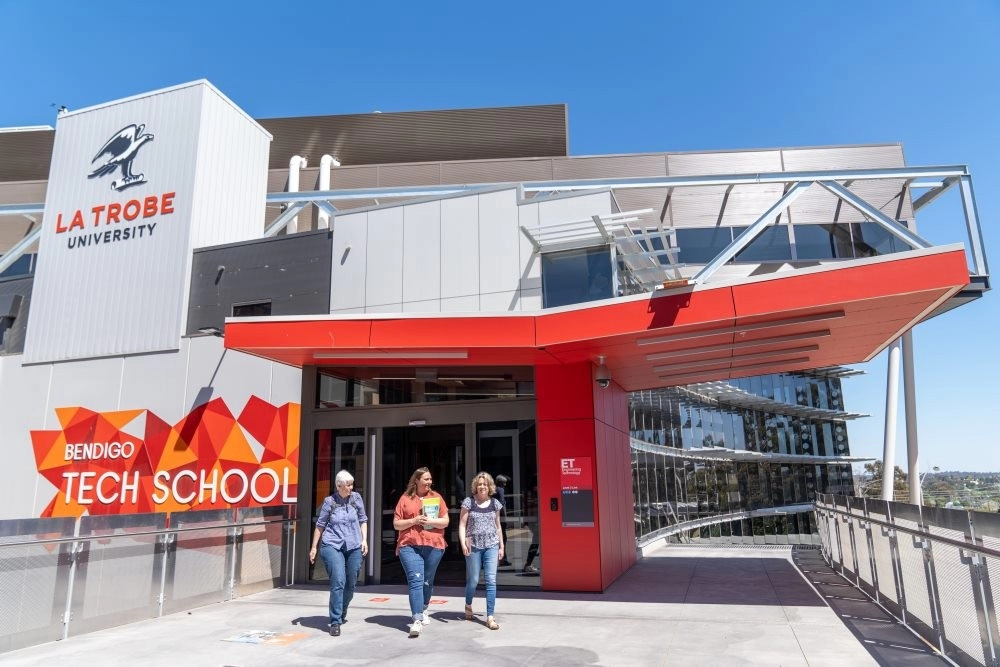There is something intriguing and alluring about Australia, the land down under, that keeps people coming back for more. From stunning opera houses to kangaroos, there is always something new and exciting to discover in Australia. And of course, let's not forget about all the celebrities who hail from this great country!
As an international student in Australia, you may be wondering what your options are for continuing your education after high school. Luckily, Australia is a great destination for students from all over the world, thanks to its welcoming policies and diverse population. Universities and campuses here offer a great opportunity to learn about new cultures and explore different aspects of the world.
Being an international student in high school, you have many options for applying to universities and colleges in Australia. Some common methods include getting a high ATAR score, having VET qualifications, or being recognized for previous study or work experience.
What is your ATAR score and what is it?
As an international student attending high school in Australia, you may be wondering what your ATAR score will be after you graduate. Continue reading this blog post to learn more about how to find out your ATAR score.
The Australian Tertiary Admissions Rank (ATAR) is a number between 0 and 99.95 that tells your position in your year group. It is used by universities to determine which students to admit into their courses.
An ATAR score is not an accurate representation of how well you did in the HSC. It is simply a percentile ranking among all of the students who are taking the HSC with you. The ATAR score is designed to be a predictor of first-year performance at university and is based on overall HSC results. So, an ATAR score of 70 means that you are in the top 30 percent of students in your year group.
ATAR can be calculated using five or four general subjects along with either an applied subject and a completed certificate III/Higher level VEL qualification. You must also make sure to have English as one of your subjects and it must be completed to a C or a higher grade.
In order to ensure a level playing field for all students, universities set a minimum rank that is required to receive an offer for a particular course. This way of measuring student ability is seen as the fairest and most equitable and is used when you are applying to university.
However, it should be noted that ATARs often reflect the demand and popularity of a given course more than the actual intellectual capacity needed to complete it successfully.
VET Qualification
If you are an international student in Australia, with a VET qualification, you can enter into higher education in any related field. The particular VET studies that a higher education provider will accept for their courses vary.
For example, a VET qualification could be a Certificate III in Early Childhood Education, a Certificate IV in Work Health and Safety, or a Diploma in Information Technology.
VET courses are offered at TAFE institutes and other private VET providers. Additionally, some universities and schools also provide VET programs.
Recognition for previous study or work
As an international family member of an Australian resident, you may be eligible to study at an Australian university using your previous work or study experience.
Different providers have different policies for recognizing previous study or work experience. Some may offer credit transfers (also known as advanced standing) for relevant academic experience, while others may offer Recognition of Prior Learning (RPL) that takes into account work, life experiences, and achievements relevant to the chosen course.
There are many ways for international family members of Australian residents to gain admission into a college or university, even without meeting the general academic requirements. Each provider has different options, so be sure to check with your chosen one. Some possible options include:
Sub-bachelor courses - Taking sub-bachelor courses at the undergraduate level can help prepare you for university study by teaching you important academic skills like writing and research. These courses can also lead to a qualification, such as a higher education diploma, advanced diploma, or associate degree. And, because they offer college credit, completing them can save you time and money once you do enroll in a university program.
Enabling courses - Enrolling in enabling courses give you the opportunity to improve skills in specific prerequisite areas, like the English language or chemistry. These courses, usually offered over one study period or semester, can help you meet the entry requirements for a bachelor's degree program.
Recommended Article:
How to apply to an Australian university?
To apply, you will need to provide the following information:
- Your personal details
- Details about your current studies and qualifications
- Proof of identification, especially if you have changed your name
- Proof of your educational history
- Contact information including an email address other than your school address
- Any admissions tests you have taken
- Authorisation for someone else to log in and help with the process
- Documents in PDF format that support your application, such as - Evidence of qualifications and academic results, personal statement, CV, portfolio, and ID proof.
Each state maintains a centre for tertiary admissions that collects, sorts, and sends applications to the appropriate universities.
The procedure will be slightly different for each state and university, let's see how.
Victoria
In order to apply for courses through the Victorian Tertiary Admissions Centre (VTAC), you must first set up a user account. The process is simple and only takes a few minutes. Once you have an account, you can apply for up to eight courses.
New South Wales
There are two ways to apply for a UAC account. You can either visit their website and click on the Apply or Log In button on the top right of the page, or you can apply through a third-party site. Whichever method you choose, you will need to provide your personal details and pay for your application.
Queensland
Follow these steps to apply through QTAC as an Australian citizen, permanent resident, NZ citizen, or holder of visas 201 or 202. First, create a QTAC account. Then, select the courses that fit your criteria and pay the associated fees, which may range from $45 to $182. Be sure to apply within the correct date ranges in order to start studying when desired.
If you do not fit any of those categories, it will be best to talk with one of our education counsellors.
South Australia
Before you apply to SATAC, make sure you meet the eligibility requirements and that you are applying within the specified date range. Once you have created a login on their website, follow the step-by-step online guide to choose your desired courses and pay the fees (which range from $45 to $225). The main offer rounds are typically finalised between mid-December and early January.
Western Australia
To apply to TISC, first, check that you meet the eligibility requirements. Australian and NZ citizens as well as those with PR status can apply through the website. Start by gathering the required information, then make sure to submit your application within the specified timeframe. Fees for the service range from $55 to $170.
If you are an international student, it will be best to talk with one of our education counsellors.
How do you accept or reject an offer?
- If you were able to apply through your state's tertiary admission centre (TAC), you can log back in to track the status and outcome of your application after you have successfully submitted it.
- Before accepting or rejecting a course, make sure you understand the process because these offers will vary depending on the course and the state. While you're waiting for a response on your preferred course, you can conditionally accept a course.
- You will have a set time frame to accept or reject an offer of admission. In your TAC account, you can accept, reject, or defer the offer. Keep in mind that accepting the offer will mean that all other offers will be withdrawn and your applications to other programs will be closed.
- You can reorganise your selections while still conditionally accepting an offer. This indicates that you can take that offer but hold out for ones that are higher on your list of preferences.
- You can alter your selections, check to see if other courses aren't full and apply for them, or look at pathway possibilities if you don't receive an offer.
Found it helpful? We can help you take it further. Contact us and get all your queries on PR, visas, migration, scholarships, and others answered today!









